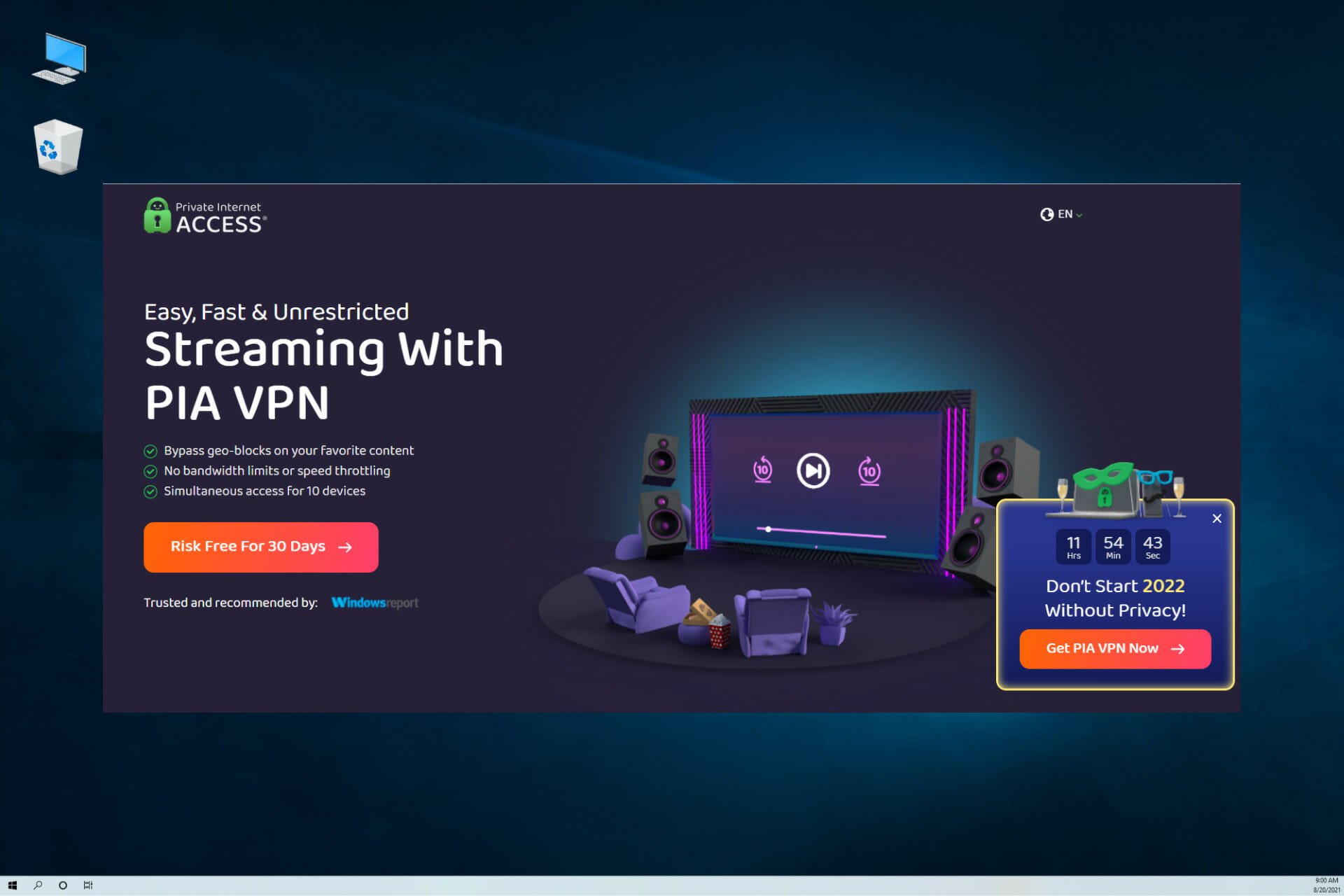

Not using PIA VPN through WiFi, the system is hard-wired on the LAN.
#PIA VPN WINDOWS 10 ISSUE UPDATE#
In Windows 10 Creators Update (1709) and newer, DNS requests are sent to all known DNS servers one-by-one (not in parallel). Set-ItemProperty -Path "HKLM:\SYSTEM\CurrentControlSet\Services\Dnscache\Parameters" -Name DisableParallelAandAAAA -Value 1 -Type DWord Set-ItemProperty -Path "HKLM:\Software\Policies\Microsoft\Windows NT\DNSClient" -Name DisableSmartNameResolution -Value 1 -Type DWord Or you can disable SMHNR using the following commands (in Windows 8.1): You can disable the SMHNR in Windows 10 via the GPO: Computer Configuration -> Administrative Templates -> Network -> DNS Client-> Turn off smart multi-homed name resolution = Enabled. It is not secure since the external DNS servers (specified for your VPN connection) can potentially see your DNS traffic (the leak of your DNS requests). By default, SMHNR sends simultaneous DNS requests to all DNS servers known to the system and uses the response it received first ( LLMNR and NetBT queries are also sent). Smart Multi-Homed Name Resolution (SMHNR) was added in these OS versions to get faster response to DNS requests.


#PIA VPN WINDOWS 10 ISSUE WINDOWS 8.1#
In addition, a new feature of the DNS client for Windows 8.1 and Windows 10 should be mentioned here. In this configuration, you cannot resolve names in the connected external VPN network. It means that your DNS requests are sent to your local DNS servers instead of the DNS servers for VPN connection. So the DNS traffic goes through the interface with the lower metric value. The screenshot above shows that the local Ethernet connection has a lower metric (25) than the VPN interface (100). Get-NetIPInterface | Sort-Object Interfacemetric For example, your VPN connection works in the the Split Tunneling mode (you want to access Internet from your LAN and your corporate resources over VPN).Ĭheck the values of all network interface metrics from PowerShell: You must understand that Windows sends a DNS query from the network interface, which has the highest priority (lower value of the interface metric). If you are using Split Tunneling (the “ Use default gateway on remote network” option is unchecked) for your VPN connection, you can access the Internet from your local network, but you cannot resolve DNS addresses in the remote VPN network (IPv6 disabling does not help here). I found some recommendations on disabling IPv6 protocol for your local (LAN) interface and it would help if you want to use the Force-Tunneling mode. The fact is that Windows 10 is trying to resolve host names in your local network through the DNS servers specified in the VPN connection settings. They are available only by IP addresses, but not by their host names. At the same time, you can ping any resources on your LAN (try to ping your gateway, neighboring computer or printer IP address).


 0 kommentar(er)
0 kommentar(er)
